Louiseania is a real pink miracle that is strongly reminiscent of Japanese Sakura in bloom. This shrub is distinguished by high decorativeness, and, besides this, he is winter-resistant tolerates well, which makes it even more valuable. In the first day days, elegant branches are covered with a variety of roses of pink-raspberry color, which please the eye of more than two weeks. After the flowering of Louiseania "puts on" a cape of green leaves, which by the end of autumn is painted in yellow, crimson, orange colors. Grow Louiseania is completely simple, if you do not neglect the basic rules of care for this culture.
Louzeyania, shrub description
Louiseania or garden almonds - a shrune representative of the Pink family, which was identified in one of the provinces of China in the 1930s of the XIX century. In nature, the plant is common in Tien Shan, on the Pamir, some regions of Russia. Long time, Louiseania was cultivated in London and St. Petersburg as a home plant, but over time, Botany did the assumption that the southern plant is quite suitable for street cultivation and in medium latitudes. Fortunately, they were not mistaken, and he began to actively plant in gardens and parks.
Sakura Louiseania is a deciduous culture. It, depending on climatic conditions, can grow in the shape of a bush with a height of up to three meters or stretched out like a tree up to 5 m in height. In culture, only one species is most often found - Louiseania is three-bladed. It increases the razel krona, shaped from dark gray shoots. Tree-blade gear leaves, often with a terry fluff on one side. On the shoots, the pairwise inflorescences of a simple or terry structure are blooming, the color hesitates from the pale pink to brightly raspberry.
Louiseania blooms early when spring paints of nature are just beginning to wake up. Initially, the rosets of flowers are revealed, of which the fruits are formed in the video of the fire, and only then foliage appears. Plant retains its decorativeness until winter.
Despite its heat lobby, Louiseania Three-blade perfectly tolerates the harsh winter, especially if there is plenty of snow. But there may be problems if the temperature fluctuations constantly occur when severe frosts are replaced by sharp thaws. This leads to the fact that Louiseania may be premature to wake up, and then damage from the onset of frosts.
Decorative varieties of Louiseania
In medium latitudes for the cultivation of Louiseania, you can buy the following varieties:
- Louiseania Kievskaya - Thawing 3.5-4 m high. Flowers terry buds of rich-pink colors for 7-9 days. Flowers are large (3 cm) and pairs, appear at the end of April. Foliage blooms after flowering. Fruit grade with red inedible fruits falling back to the end of summer.
- Louiseania Triloba is a variety with single inflorescences on short spacing. The color of the outer petals is gentle pink, and in the middle of the white. The amount of inflorescence is 1.5-3 cm, bloom in the first week of May. The grade has increased frost resistance, it is good in a cut.
- Louiseania of the snow Wormura is a car of low growth (up to 2 m) with thin branches. Flowers semi-grade, white-pink. During flowering, rapidly green leaves are blooming. Flowers from late April to mid-May.
- Louiseania Veshenganka is a mid-grade bush (1.8-2.2 m). Differs in large inflorescences of flat shape. For this variety, special decorativeness is characterized: first the flowering petals of gentle-pink, and closer to fatty - milk-white.
- Louiseania captivity is a medium-sized bush (no more than 2 m in height) with a lush cap. Flowers terry with a dozen sewers, quantity of 3.5-4 cm. Buds are dissolved early, but simultaneously foliage appears, so decorativeness is somewhat reduced. Flowering lasts 10-16 days, then cherry fruits are tied, which soon dry out and fall.
- Louiseania Tanyusha is a low grade (1.3-2 m) with thick walkers. Dark raspberry flowers, strongly terry, large (up to 5 cm). It is considered one of the most beautiful-flowing species, thanks to the petals of an unusually curved bulk form. It blooms early and long.
Louiseania, landing and care
This shrub is light-seeking, drought-resistant and not very demanding to the soil and watering. But in order for he to bless him and sick less, it is important to allocate a suitable place in the garden for him.
Louiseania, choice of place
There are no stringent soil requirements, but the shrub is better growing in fertile, moderately. Better if it is carbon, lightweight, well-drained land. Louiseania loves moisture, but there should be no stagnation of water in the roots, therefore the site should be without high groundwater. If the root neck is constantly poured with water, the plant will die.
Louzeania Three-bladed seedling landing site should be selected solar, desirable equal, without elevation or holes. There should also be no drafts. Moderate half-day is allowed, but without dampness. It is also worth foreseeing that the selected place does not fit the spring.
Louiseania, landing
For the landing, a hole is digging with a diameter and a depth of 50-65 cm. At the bottom of the same landing pit, the prepared mixture is stacked: three parts of the leaf land, two parts of humus, part of the sand. Additionally contributed 200-250 g of lime. Then the root system is neatly immersed in the pit, the earth falls asleep. The upper layer is necessarily left loose, and it is plenty.
Louiseania, reproduction
Louiseania is multiplied by seeds and vegetatively. The first method is extremely capricious, therefore used exclusively by experts. But breeding a plant with cuttings is easy:
- In the spring, some young shoots are cut.
- Then they plunge into any drained ground.
- Organic fertilizer is made (once when landing is quite enough).
- Periodically, watering is carried out as the upper grounded burnt burnt.
- The rooting occurs in about 2 weeks.
Another way to get new bushes is a reproduction with gag:
- The bark of the bottom escape is caught along several times.
- The damaged place is pressed against the ground and falls asleep.
- Then rare and moderate watering is carried out.
- Full rooting occurs only the next year.
- Flowering is observed in 3-4 years after landing.
Also can be vaccinated by Louiseania on fruit trees - plum, Alych, Apricot. The vaccination is conducted in early spring:
- Lock and cuttings are selected the same sizes, cuts are made 25 mm.
- There should be at least two kidneys on each cutlets.
- The cut on the cutlets is made oblique, at a distance of 10 mm from the kidneys.
- Grafting at an altitude of 110 cm.
- The cuttings are fixed on the cutting of polyethylene with a ribbon. Its width must be 12-15 mm.
- The winding is carried out quite tight, in the direction from the bottom slice to the top end.
- Film is fixed by its melting by match.
- The upper end of the cut is processed by a garden boiler.
- The cutlets pretty quickly begins to grow, and after 30-35 days the strapping weakens or completely removed.
- In the future, it is necessary to remove the shootings of the flow of the flow, growing below the vaccination, and the cutting of the wild row.
Louiseania - Garden Care
Care for garden cherries - simple: moderate watering, forming pruning, shelter for the winter. The culture is sick infrequently, rarely requires fertilizer. Transplanting a plant tolerates calmly, and if necessary, it is better to do it in August.
Louiseania, watering and fertilizer
The plant develops well in conditions of long drought, but during the flowering period, buds evaporate a lot of moisture and need more abundant irrigation. If this is not done, the flowers are flashed, and the duration of their flowering is strongly reduced.
The frequency of watering also depends on the soil. If it is sandy, watering increases, and if the sublinous is reduced. Threaten threesome almonds need when the soil creates 1-2 cm deep.
The fertile soil of Louisiania does not require frequent fertilizer application. A little enrich the soil standing after flowering. To do this, ½ buckets of humidia, which is laid in a near-break place. 10 days after, it is advisable to easily easily support the soil soil - 12 g on the water bucket for one bush.
In the fall, Louiseania fertilize with superphosphate in the amount of 45 g per sidet. At the end of the autumn, the propelled circle is mounted with a ventilation peat.
Louiseania, pruning and wintering
Spring trimming is necessary for the beautiful shape of the cap, as well as for the purpose of recovery, if the bush in winter frozen. Pruning after the end of flowering is also carried out. All blooming twigs are shortened on 2/3 of their lengths. This method provides an intensive growth of new shoots.
Louiseania quickly thickens, so all twigs are removed towards the trunk. This warns the appearance of diseases and stimulates abundant bloom for the next year.
If the winter in the region is very severe, in Louiseania can freeze shoots, and the root neck is damaged, so the shelter plant should be provided. The church of the face is flexible, fixed in any suitable way, but it is necessary to do it carefully, since the twigs are very fragile. From above, Louiseania is covered with a rotary material.
The crown stammer crops binds and turns off with nonwoven material, shelting completely all the kidneys. Young seedlings need an additional shelter of the priority site. For this, the layer of earth is poured with a height of 15 cm, but the root cerv is left not covered.
Louiseania, illness and pests
Almond Louiseania is inclined to two diseases - monilial burns and gray rot. The first disease occurs when creating inappropriate conditions for growth and poor care, and requires a serious revision of the agricultural engineering rules applied. To cure the plant you need to process it with borobo liquid before and after flowering. The second disease is caused by a strong irrigation or a large amount of precipitation. Avoiding the destruction of the shrub can be timely cut of affected shoots.
A severe danger to Louiseania provides a Milky Glitter. This fungal disease is incurably and quickly affects neighboring plants. The only thing that you have to do is to fully irrigate and burn the bushes.
From the pests, Louiseania loves to strike a wave and coroede. As a result of damage to the bark, a fungal infection is often joined, so it is important to process the bark with a mixture of lime and clay.
Can suffer a lot of Louiseania from the lights-Lazorovka. This bird at the end of winter, looking for food, can embodious all the kidneys on the tree, which by this time already swell. To prevent this, you need to feed these birds.
Louiseania, photo in the garden
Garden cherry can with confidence to plant both in single and group landings. It looks perfectly in the gardens, squares, park areas. It is successfully combined with coniferous cultures, loyal and blooming perennials.
Louiseania seedlings will give your site Eastern accent, will add paints and inspiration. At the same time, this rose tree will not require long care, and will delight with his decorative since April to November.

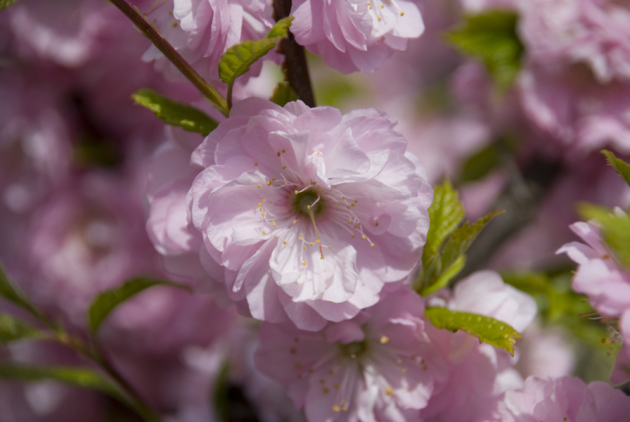
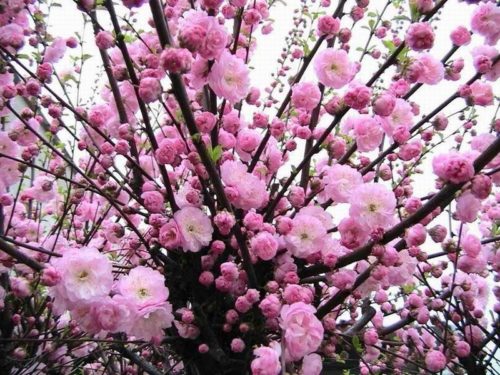
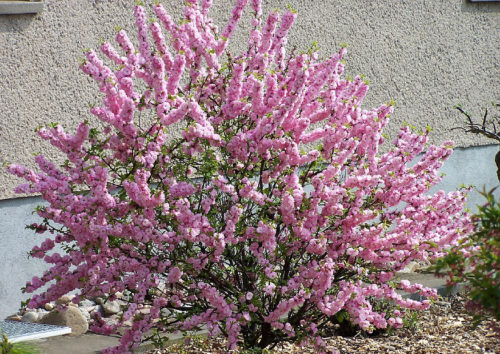
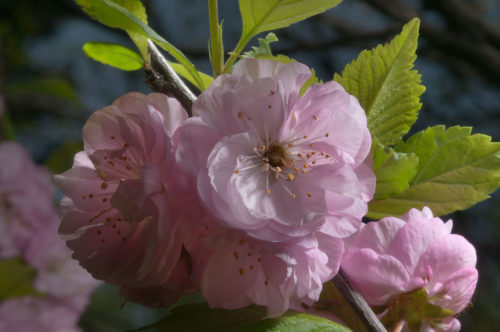
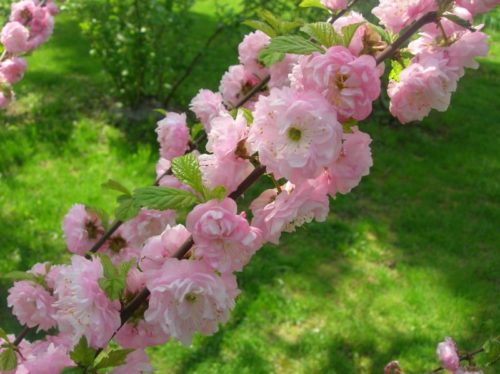

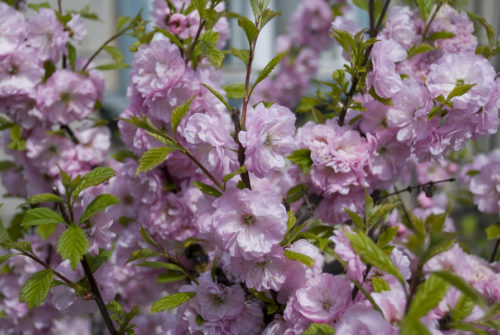
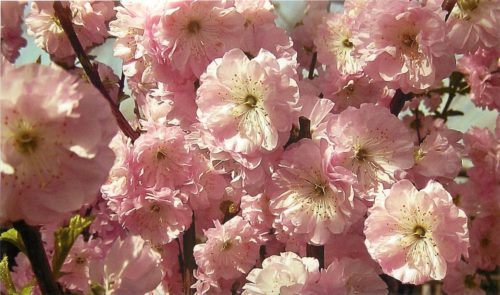
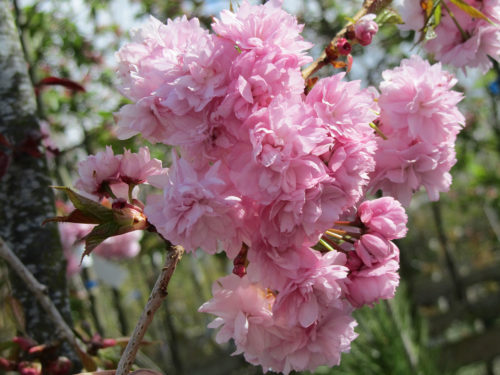
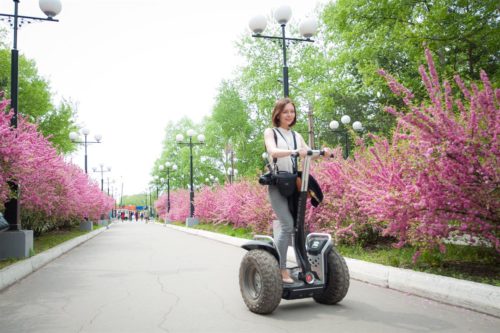
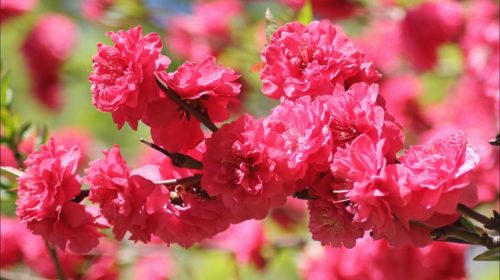












 Start a discussion ...
Start a discussion ...